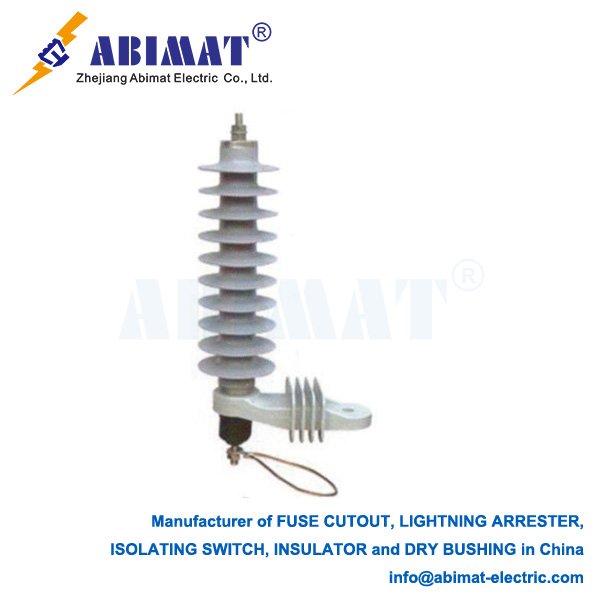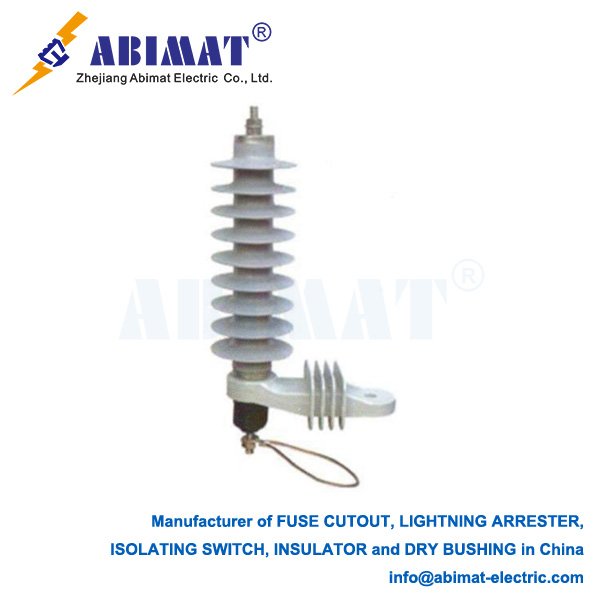22kV Lightning Arresters: Protection for Critical Medium-Voltage Infrastructure
Introduction
22kV lightning arresters (surge arresters) serve as essential protective devices within medium-voltage (MV) power systems operating at a nominal voltage of 22kV. Commonly deployed in industrial facilities, specialized distribution networks, mining operations, and renewable energy collector systems, they safeguard expensive equipment against transient overvoltages originating from lightning strikes, switching operations, and system faults. Their precise operation ensures system reliability, minimizes equipment damage, and prevents costly downtime.

Core Operating Principle
Functioning as voltage-sensitive switches between phase conductors and ground, 22kV arresters exhibit two distinct states:
I.High-Impedance State (Normal Operation): Under standard system voltage (< threshold), they act as near-open circuits, allowing uninterrupted power flow.
II.Low-Impedance State (Surge Event): Upon detecting a transient overvoltage exceeding their threshold, they rapidly transition (nanoseconds) to a low-impedance state. This creates a preferential path, safely diverting high-magnitude surge currents to ground. Crucially, while conducting, they clamp the residual voltage (Up) appearing across protected equipment terminals to a predetermined safe level, significantly below the equipment’s Basic Impulse Insulation Level (BIL). Post-surge, they autonomously reset.
Technology: Advanced Zinc Oxide Varistors
Modern 22kV arresters exclusively utilize Zinc Oxide (ZnO) Metal Oxide Varistor (MOV) technology. The core comprises a column of sintered ZnO discs doped with metal oxides (Bi₂O₃, Sb₂O₃, CoO, MnO₂). This structure creates millions of grain-boundary p-n junctions:
Below Threshold Voltage: p-n junctions act as high-resistance barriers, permitting only microamp-level leakage current.
Above Threshold Voltage: Intense electric fields induce quantum mechanical tunneling across junctions, causing a highly non-linear drop in resistance. Surge current flows freely to ground while the inherent ZnO properties clamp the residual voltage (Up).
Self-Restoration: Junctions reform their high-resistance barriers automatically once voltage normalizes.
ZnO Advantages for 22kV Systems:
Lower Protective Levels: Achieves lower Up than legacy SiC technology, enabling better coordination with equipment BIL (typically 125kV or 150kV).
Ultra-Fast Response: Reacts within nanoseconds to steep-fronted transients.
High Energy Absorption: Handles significant energy from direct/indirect lightning strikes and severe switching surges.
No Follow Current: Negligible power-frequency current after surge diversion, eliminating need for series gaps.
Robust Stability: Reliable long-term performance under continuous operating voltage.
Critical Performance Parameters & Selection
Selecting the correct 22kV arrester requires rigorous evaluation against system conditions and standards (IEC 60099-4 / IEEE C62.11):
| Parameter | Definition & Importance | Typical 22kV Values |
|---|---|---|
| Rated Voltage (Ur) | Max permissible RMS power-frequency voltage withstandable for 10s during severe TOVs (e.g., phase-ground faults). MUST exceed site-specific max Temporary Overvoltage (TOV). | 24kV – 36kV (Depends heavily on system grounding: effectively grounded, resistance grounded, ungrounded). Ungrounded systems require higher Ur. |
| MCOV (Max Continuous Operating Voltage) | Highest RMS phase-to-ground voltage sustainable indefinitely without degradation. Critical for longevity. | Solidly Grounded (V_ph-g ≈ 12.7kV): 15.3kV – 17.5kV Resistance Grounded: Requires careful calculation based on fault scenarios. |
| Nominal Discharge Current (In) | Peak 8/20 µs lightning current rating for classification. Indicates robustness. | 10kA (Standard Distribution) 20kA (High Exposure/Critical Assets) |
| Lightning Impulse Protective Level (LPL / Up) | Max residual voltage at specified 8/20 µs current (e.g., Up(10kA)). MUST be 20-30% below protected equipment BIL (e.g., 125kV BIL requires Up << 100kV). | ~55-75kV @ 10kA (Varies by manufacturer/design) |
| Switching Impulse Protective Level (SPL) | Max residual voltage under longer switching surge currents (e.g., 30/60 µs, 250/2500 µs). | Critical for capacitor bank/reactor protection. |
| Pressure Relief Rating | Max prospective fault current (kA RMS) arrester can safely interrupt upon internal failure without violent rupture. Non-negotiable for personnel safety. | Must exceed site fault current. |
| Creepage Distance | Total leakage path length on housing surface. Sized per pollution severity (IEC 60815). | Polymer: ~420-780mm (Medium-Heavy Pollution) Porcelain: Higher may be needed. |
| Line Discharge Class (IEC) | Classifies energy absorption capability from line discharges (e.g., Class 1-5). | Class 2-3 (Typical) Class 4-5 (Capacitor banks/long lines) |

Applications
22kV arresters protect critical assets:
22kV Power Transformers: Primary winding/bushing protection.
MV Switchgear & Circuit Breakers: Shielding insulation and controls.
Large Motors & Generators: Preventing winding insulation failure.
Capacitor Banks & Reactors: Mitigating switching surges.
Cable Terminations & Feeders: Especially at overhead line transitions.
Industrial Process Lines & Mining: Heavy machinery power feeds.
Wind/Solar Farm Collector Substations: Protecting inverters/transformers.
Selection & Installation Considerations
System Grounding: Dictates Ur and MCOV selection (highest priority).
Location & Exposure: Lightning density, proximity to switching devices (vacuum breakers, capacitors), fault levels (pressure relief).
Protected Equipment BIL: Determines required Up and SPL.
Environment: Pollution level (creepage), altitude (MCOV derating), temperature, corrosives (favors polymer housing).
Coordination: Ensure arrester coordinates with upstream/downstream protection and equipment insulation. Manufacturers like ABIMAT provide essential application support.
Monitoring & Maintenance
Proactive measures ensure ongoing protection:
Visual Inspections: Annually check for physical damage, severe pollution, terminal corrosion, or leakage indicators/disconnector operation.
Leakage Current Monitoring: Measure resistive component (offline testers/online monitors) – rising current indicates ZnO degradation. ABIMAT and others offer solutions.
Surge Counters: Log surge activity frequency.
Thermal Imaging: Detect abnormal heating from internal defects. Replace degraded units immediately.
Conclusion:
The 22kV ABIMAT lightning arrester, founded on advanced ZnO varistor technology, is indispensable for safeguarding medium-voltage infrastructure operating at this specific voltage level. Its ability to instantaneously clamp destructive overvoltages protects critical assets and ensures operational continuity. Precise selection—centered on rigorous analysis of system grounding, TOVs, required protective levels (Up, SPL), and safety ratings—combined with strategic placement and basic monitoring, delivers reliable, long-term protection for industrial plants, specialized distribution networks, and renewable energy installations.

